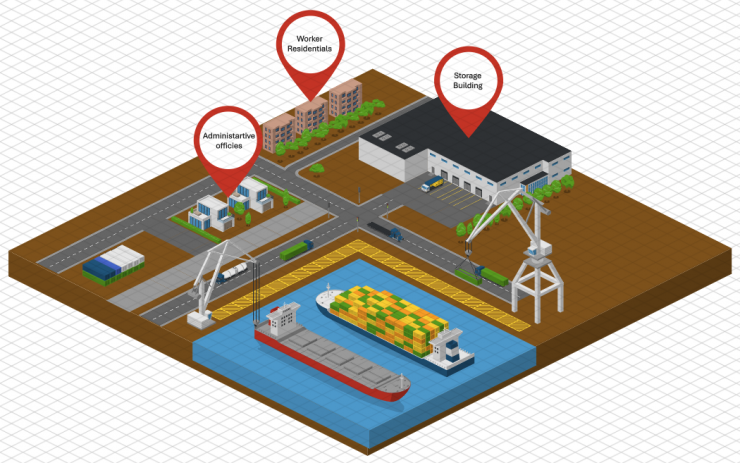Integration Context : Harbor Facilities System
A harbor system is an integrated infrastructure that supports the docking, loading, unloading, and maintenance of ships and vessels. It encompasses natural and artificial components to facilitate maritime trade, transportation, and logistical operations. As the harbor system consists of multiple-purpose buildings, our model focused on the different structures that can be utilized for them.
Our three individual systems are:
Administrative offices are an essential part of a harbor system, where various operations are monitored and handled, including the harbor’s logistical operations and trade-related operations managed by certain companies. Shipping container buildings provide modularity to satisfy the different demanding sectors that can enter a harbor system. They also provide customizable office areas that can be deployed within short timeframes, which is suitable for critical situations.
On the other hand, worker residential areas can also be provided in the harbor system, creating worker-friendly areas for marine workers that suits their work conditions of frequent travel. Concrete structures provide durability, high residential capacity, thermal insulation, and soundproofing necessary to create a comfortable environment for marine workers in a demanding location such as a harbor.
Furthermore, it is fundamental for a harbor system to have a storage facility with large open spaces. This is accomplished most effectively using a steel frame structure as it enables the construction of large, column-free areas. Steel structures can also achieve a high degree of fire resistance when properly treated, which creates a sustainable and durable structure.
The resulting combined model describes and discusses different aspects of essential facilities that can go under frequent adaptation due to new visitors, discarding technical facilities that consist majorly of machinery such as ship repair facility or the port.
Main Page I Introduction I Individual Systems I Integrated Ontology I Integrated Parametric Model
